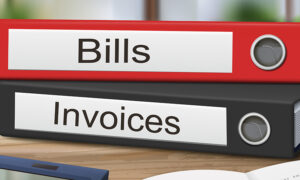Every member of a managed community should know how to read HOA financial statements. This knowledge will help owners understand how the association is doing financially and be able to determine whether the board is doing its job well.
HOA Finance 101: How to Read HOA Financial Statements
Homeowners associations operate largely like corporations. There is a Board of Directors that calls the shots and ensures that the organization is running smoothly. The HOA board is also responsible for preparing regular financial statements, though this job can also fall on the HOA manager.
Typically, financial statements come at the end of every month and at the end of the fiscal year. In many states, such as California, the law requires homeowners associations to make these statements available for members to review. Homebuyers can also have access to such reports, as assessing the financial health of the association will help them make a decision on whether or not to buy into the community.
What Are the Benefits of Knowing How to Interpret Financial Reports?
It is important for both board members and homeowners to learn how to read HOA financial statements. For one thing, it is part of the board’s job to do so. Knowing how to interpret financial statements will help the board prepare an accurate annual budget. It will also inform the board’s discussions when it comes to the association’s finances, allowing them to make sound financial decisions.
For homeowners, understanding HOA financial statements will let them stay on top of the association’s financial condition. Homeowners benefit from the community’s financial success, as it has a direct impact on property values. As such, it only makes sense to keep track of its finances. Homeowners also have a right to know where their money is going. After all, owners pay regular dues for the purpose of maintaining the community.
Beyond all else, knowing how to read financial statements will help both boards and owners in preventing fraud. If only one person understands these reports, then it would be easy for that person to cook the books and steal money from the HOA. Learning how to read financial statements will allow owners to spot any signs of fraudulent activity.
A Guide on How to Understand HOA Financial Statements
Unfortunately, not everyone in an HOA community knows what the numbers mean in financial reports. But, once one knows about the basics, it is actually relatively easy to learn how to read HOA financial statements.
Balance Sheet
 The balance sheet shows a snapshot of the association’s financial condition. It presents the HOA’s assets, liabilities, and equity — all in one neat report. It is called a balance sheet because the association’s total assets should equal its total liabilities and equity.
The balance sheet shows a snapshot of the association’s financial condition. It presents the HOA’s assets, liabilities, and equity — all in one neat report. It is called a balance sheet because the association’s total assets should equal its total liabilities and equity.
Through the use of financial strength ratios (such as working capital and debt-to-equity), an owner can determine whether the HOA can meet its obligations. These ratios, along with several others, give owners an idea of the association’s financial stability. While the balance sheet is an integral part of any HOA’s financial package, it usually requires the accompaniment of other reports to fully understand the association’s financial health.
Income Statement
The income statement is a detailed view of the association’s income compared against its expenses. It essentially shows whether or not the HOA was able to meet its financial obligations with the funds it has accumulated over a set period of time. The income statement consists of the HOA’s revenues, expenses, and reserve contributions. Totaling all of these numbers will arrive at a net profit or loss for the association.
Though it is not an HOA’s main goal to earn a profit, a net loss would indicate that the community had more expenses than revenue streams in the past period. This means the board either did not practice smart spending or failed to prepare an accurate projected budget. Sometimes, it could point to an underlying financial issue such as fraud or embezzlement.
Owners should look for overly inflated expenses or redundancies to spot fraudulent activity. For instance, it would not make sense to spend five figures on office supplies. Members should remember that it is okay to question the board’s spending and that such a practice is healthy and helps keep the board in check.
Cash Flow Statement
The cash flow statement consists of three parts: operating activities, investing activities, and financing activities. Analyzing the cash flow statement will allow boards and owners to understand how the association is handling its money.
Under operating activities, owners will find the association’s cash sourced and spent on business-related items. This could mean dues from owners, fines, salaries, and other operating expenses. Under investing activities, owners will find items that are considered investments, such as assets or equipment. Any reserves invested should also be presented here. Finally, under financing activities, owners will find cash sourced from investors such as banks.
Accounts Receivable Report
 The accounts receivable report tells boards and owners how much is owed to the association. It is a summary of all the money the association expects to receive. It could include dues from homeowners, rental income from a facility, etc. This could also come in the form of an aging report, which shows how long each account has remained unpaid.
The accounts receivable report tells boards and owners how much is owed to the association. It is a summary of all the money the association expects to receive. It could include dues from homeowners, rental income from a facility, etc. This could also come in the form of an aging report, which shows how long each account has remained unpaid.
The HOA should maintain a fairly reasonable AR report. It should not have too many receivables, especially overdue receivables, as that would mean the board is not putting a lot of time into collection efforts.
Accounts Payable Report
The accounts payable is similar to the accounts receivable report but in reverse. Instead of showing amounts owed to the HOA, this report shows the amounts the HOA owes. As with the AR report, it may also show how long each account has remained unpaid. Too many payables would indicate that the association is not paying its debts on time or that there is not enough money to settle the balances.
A Form of Protection
Boards and homeowners alike must learn how to read HOA financial statements. In doing so, they can interpret the reports accurately and make smarter financial decisions. It is also a way to protect the association from fraudulent acts. When it comes down to it, understanding financial statements should not be a job left only to one person.
Homeowners associations can significantly make financial statement preparation easier with the help of HOA software. Call Condo Manager today at (800) 626-1267 to learn more or contact us online for a free demo.
RELATED ARTICLES:
- HOA Accounts Payable Report: What Is This For?
- HOA Account Delinquency Report: Does Your HOA Need One?
- 4 HOA Financial Reporting Mistakes To Look Out For



